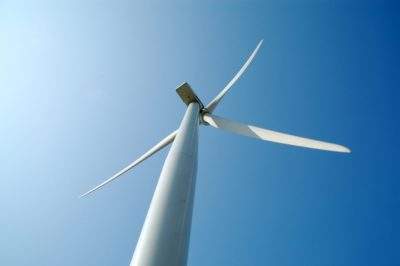Clir Renewables has launched a new renewable optimization and reporting software to quantify the impacts of forestry on wind farms.

Image: Clir Renewables develops optimization software for wind farms. Photo courtesy of Falk Schaaf/Freeimages.com.
The impact of forestry on inflow conditions is often poorly accounted for when developing wind farms, and once a project is operating, there can be a significant physical effect on the life expectancy of the turbines and an adverse effect on performance.
For wind farm owners, wind turbine blades effortlessly gliding through the air when met by smooth, undisturbed inflow conditions is easy on the equipment. However, projects situated in or near forested terrain typically present additional challenges. As the wind passes over forestry canopies, wind flow is disturbed, generating more complex conditions such as turbulence and shear, creating slower uneven loads on the blades.
This turbulent air stresses the blades in differing proportions increasing the level of wear and tear across wind turbine, including but not limited too accelerated blade cracking and gearbox and generator failures, reducing life expectancy.
Until now owners have not had the tools to quickly and easily understand the impact of forestry at a wind farm, often relying on often prohibitive, expensive studies to assess the impact. Clir software is built on a domain-specific data model that takes account of geospatial considerations, such as forestry, that drive turbine inflow conditions.
By utilizing the geospatial information and atmospheric stability, performance issues at the turbine itself, and in the inflow conditions, can be more accurately parsed out to enable owners, operators and other wind farm stakeholders to understand project underperformance and performance risk for specific items such as forestry.
Clir Renewables data scientist Andrew Cameron said: “Many owners are likely experiencing generation losses due to forestry in the area of their wind farms; the degree to which they may be unaware. Additionally, the disturbed wind inflow may be increasing turbine loading, reducing their operational life. Additional operational costs associated with premature component failures and reduced turbine service life can surprise owners who may not have accounted for this in their financial model.”
Andrew continued saying: “By assessing this early in the wind farm’s operational life many of the costs and losses can be better understood, accounted for and potentially reduced.”
Once an owner is aware of the forestry impact on AEP and loading conditions, a cost-benefit analysis can be formulated to identify the appropriate next steps. When implemented the optimization recommendations can produce increases of around 5% AEP for the wind farm and extend asset life by up to five years. In situations where a wind farm’s forestry is poorly managed gains of almost 10% AEP, and 5+ years of life extension are possible.
Clir CEO Gareth Brown said: “The wind industry is unique. It’s the only power source we don’t know what the inflow conditions are. The industry to date has tried to build digital and physics-based models, but they are limited in scope and capabilities as they fail to take into account the inflow conditions. By digitizing beyond an individual turbine and what drives their inflow conditions enables Clir to more accurately build effective advanced analytics and AI tools to identify where performance can be improved.”
Brown continued saying: “The challenges defining performance issues due to no inflow measurement are compounded by, poorly structured SCADA data, inadequate industry performance tools and metrics that focus on the question is the turbine spinning rather than performing, and conflicted service providers or OEMs who are focused on protecting their internal know-how rather than building products to enable effective performance management.
The Clir platform circumvents this by building a domain-specific data model that gives owners the tools to maximize their understanding of the asset, where lost energy is occurring and get clear actions to mitigate the lost energy for items like forestry and many others.”
Source: Company Press Release
